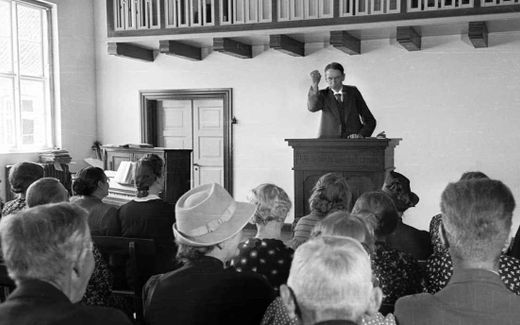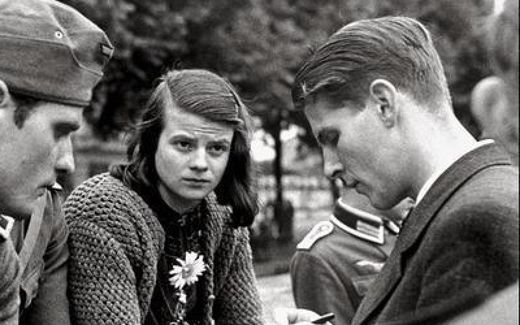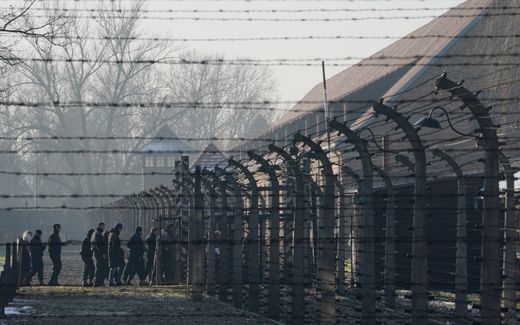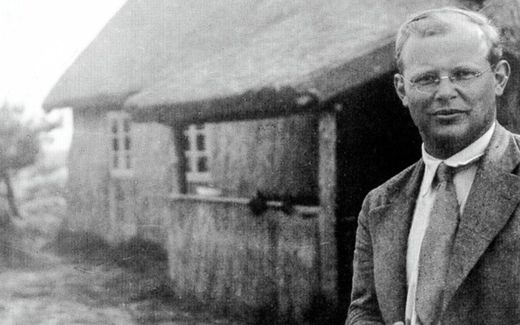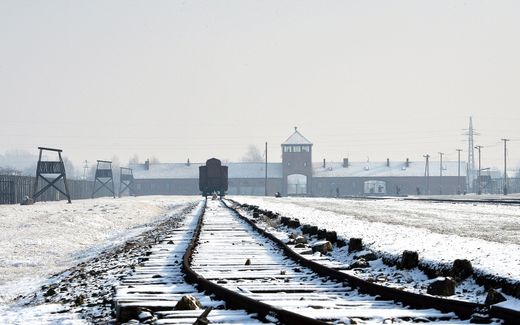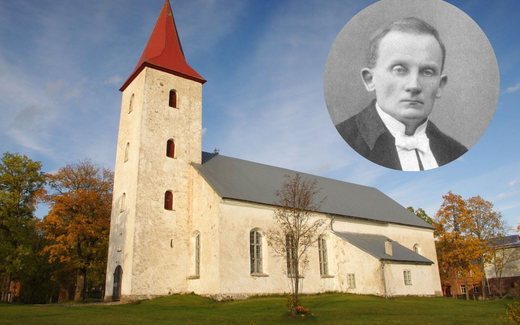Hans Hirzel survived to the dismay of his betrayer
23-02-2023
Central Europe
A.B. Goedhart, RD
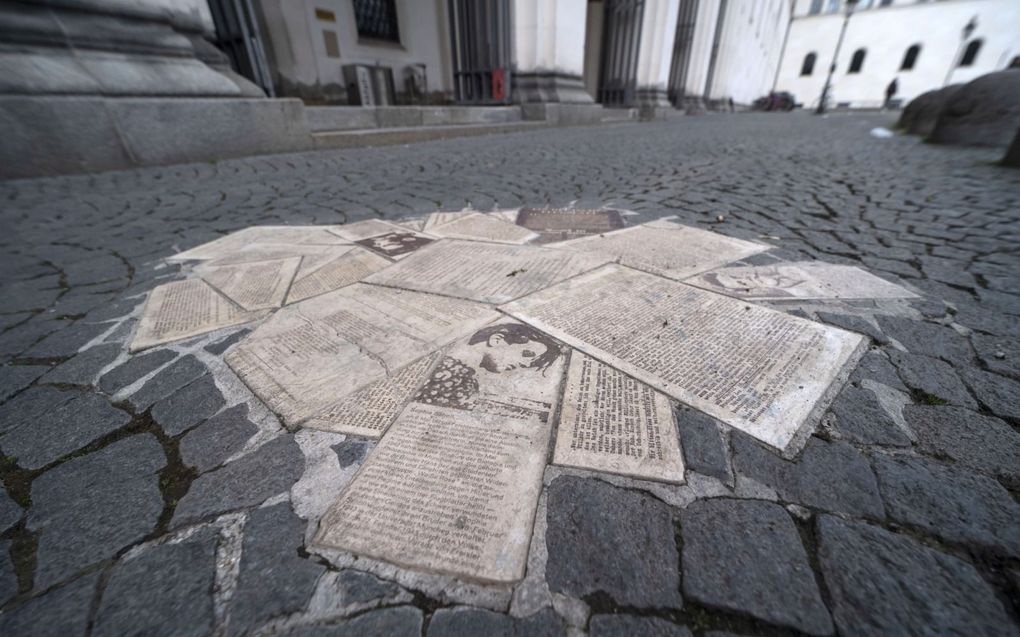
Pamphlet monument at the entrance of the Ludwig-Maximilians University in Munich. It is a remembrance of the White Rose resistance organisation. Photo EPA, Lukas Barth-Tutas
Central Europe
The German resistance group, the Weisse Rose, has become very famous. On Wednesday, February 22, it was 80 years ago that the Nazis ended the lives of three of its members: Hans and Sophie Scholl and Christoph Probst.
Less well known is that another student involved in the group, Hans Hirzel, did survive the Hitler regime. To the shock of his traitor, it turned out after the war. "You are still alive!"
The Weisse Rose (White Rose) called, from June 1942, for non-violent resistance to the Nazi regime. The group consisted of five students -in addition to brother and sister Hans and Sophie Scholl and Christoph Probst: Willi Graf and Alexander Schmorell- and several professors, including Kurt Huber and Carl Muth of the University of Munich. Between June 1942 and February 1943, they printed and distributed six anti-war pamphlets in major German and Austrian cities. The group was inspired by the Christian faith and ideals of freedom and pacifism.

Hans Hirzel from Ulm also felt the attraction of the Weisse Rose. In a Gestapo archive document, we read: "On January 29 1943, two members of the HJ (Hitler Youth, ed.) appear at the Gestapo-Stuttgart office. One is called Wolf Tröster, unmarried and a merchant by profession. The other is Gerhard Munz. He is single and a student. Both persons report the name of a national traitor: Hans Hirzel. He is a student and lives with his parents. His father is a city pastor in Ulm (Danube).
Birthday present
The charge brought against Hirzel reads, "He showed them a handwritten letter at a meeting in Stuttgart on January 10 1943. That letter instructed Hirzel to pick up a birthday present. In addition, he is instructed to distribute pamphlets on January 30 with state-endangered content. The birthday present from Munich is a stencil machine that prints pamphlets. Those pamphlets are to be distributed in Ulm and later in other places (Berlin, Hamburg, Cologne, etc.). After this, Tröster literally says: "Tomorrow is January 30, and to my firm belief, Hirzel will carry out his plan. For that reason, I am reporting what I know."

With this knowledge, the Gestapo department in Stuttgart makes haste because that very same day, it phones colleagues in Ulm. These are to arrest and interrogate Hans Hirzel. An Ulm detective does his duty but leaves the requested report of the interrogation on his desk for a fortnight.
Pamphlet
The handwritten letter referred to in the document is written by Sophie Scholl, and the pamphlet with "a state dangerous content" is the fifth written by the resistance group the Weisse Rose. This pamphlet reads: "The war is heading towards a decisive endpoint... Do you want your children to experience the same fate as the Jews? Will we forever be the people hated and rejected by the whole world?.... The foundations of the new Germany should be: freedom of speech and protection of the individual citizen against the arbitrariness of criminal dictatorships. Hitler cannot win the war, at best, prolong it. Just punishment approaches. Man is defenceless against evil without the true God..."
Hans Hirzel has known Sophie Scholl for several years. She also puts him in touch with her brother Hans. Sophie and Hans Hirzel have long conversations about wartime resistance. In the summer of 1942, he gets hold of the first pamphlet. He is also invited to join the circle of friends in Munich. And Hans responds positively to the request to join.
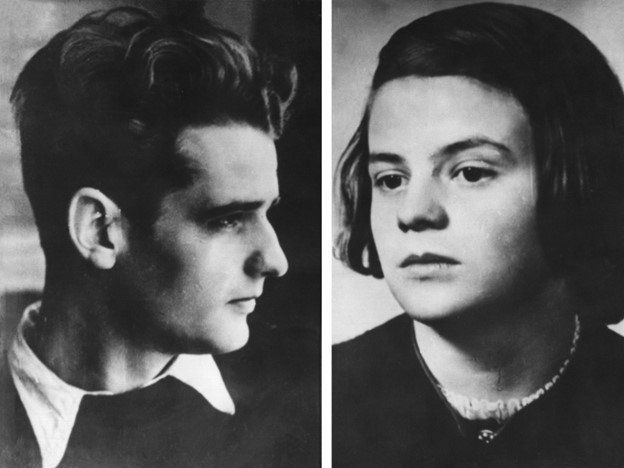
His motivation to cooperate with the resistance group starts growing when he sees a large, yellow poster on an advertising column. The text on this poster is downright anti-Semitic. In the centre is drawn a Star of David, with the words "Whoever wears this sign is an enemy of our people". Speaking to his friends, Hans Hirzel says: "When I was standing by this column, a man arrived wearing the Star of David. It was an elderly man, who was immediately pilloried because of this badge on his coat."
The meeting brings Hans to an idea. He makes a stencil and replaces the Star of David with a swastika. In doing so, he writes: "Whoever wears this sign is an enemy of our people." A masterpiece of anti-Nazi propaganda! The courageous designer is only 18 and will soon take his final grammar school exams.
Secrecy
Hans tries to find allies among his peers to spread the pamphlets together. Using the army strength statistics in his atlas, he tries to convince them. In his search, he comes into contact with two members of the Hitlerjugend (HJ), the National Socialist youth movement: Wolf Tröster and Gerhard Munz.
In January 1943, Hans has to play the piano in Stuttgart. He asks both friends if they will help him distribute pamphlets at the end of January. Afterwards, they agree to maintain complete secrecy about their conspiracy.
Two weeks later, Sophie Scholl gives 2,000 pamphlets to Hans Hirzel at the parsonage in Ulm. In the gallery of the Martin-Luther-Kirche, of which Hans' father is pastor, the pamphlets are put into envelopes, addressed and stamped. School friend Franz Müller helps with this.
To create the impression that there are resistance groups all over the country, Hirzel travels to Stuttgart on January 22. He convinces his sister Suzanne (a friend of Sophie Scholl) to help him put envelopes into mailboxes unseen. And although the Gestapo deploys special teams to monitor railway stations and Munich University, no one finds out about their activities.
But what do the two Stuttgarter HJs do? They have decided to stop distributing the pamphlets, even though there is no danger to them. Why do they go to the Gestapo anyway? Is it fear or honour? Wolf Tröster reportedly said to Gerhard Munz: "Hans Hirzel is telling a fantasy story. I see clearly now that it is my sacred hero's duty, even if it is against a friend, to prevent this dagger from being thrust into the back of our soldiers...! We are going to the Gestapo."
Death penalty
On Tuesday, February 16 1943, Hans Hirzel receives a summons from the Gestapo in Ulm. The next day he has to come to the station at noon. Immediately he suspects that both HJs -Tröster and Munz- had a hand in this. What story will he tell to get out of this precarious situation?
Hirzel also has to take his final maths exam a day later. For this reason, he cannot be in Stuttgart to find out who his traitor is. Hans informs his brother Peter, who travels to Stuttgart in the middle of the night. Peter takes a life-threatening risk because he is a soldier and on front leave. Therefore, he is not allowed to leave his hometown without official permission. Whoever does so commits flag-running (desertion). If you are then arrested, you will get the death penalty!
To help his brother, Peter puts on civilian clothes. Wearing his brother Hans' identity card, he ventures the risky journey to Stuttgart. As soon as he arrives at the station, he encounters a checkpoint. He is asked for his identity card. As a special feature, it states that the bearer has a scar on his left thumb. But fortunately, the soldiers do not notice this.
Books
When Peter arrives at his sister's house, he gives orders to burn dangerous letters and remove banned books. This is done.
After this, he goes to Tröster, but he is not at home. He then seeks out Munz. He begs him to tell him if he or Wolf has betrayed his brother, Hans, to say to him honestly.
Munz denies the suspicion. He invokes his parents, who own an evangelical bookshop. He claims he would never do such a mean thing.
Meanwhile, Hans Hirzel has completed his maths exam in record time to meet his brother at Ulm station on time. Relieved, Hans goes to the Gestapo after this. After the interrogation, they let him go.
Warning
Immediately after this interrogation, Hans goes to Sophie Scholl's parents. He asks if sister Inge Scholl can travel to Munich to warn her sister and brother.
Inge does not travel to Munich but relays the warning by phone to her friend Oti Acher in Munich. The latter makes an appointment with Hans and Sophie Scholl the next day, February 18 1943.
The end is known. In the University of Munich building, Sophie Scholl drops pamphlets from the second-floor balustrade down into the courtyard. The National Socialist caretaker sees it, and the Gestapo arrests her and her brother Hans. Four days later, on February 22 1943, she and fellow member Christoph Probst are killed by the falling axe (guillotine).
The Gestapo arrests more than eighty friends and relatives of the Weisse Rose. Trials follow, and there are many casualties from executed death sentences in prisons and concentration camps.
Interrogation
Whether the distribution of Hans and Sophie Scholl's pamphlets was directly related to Hans Hirzel's interrogation by the Gestapo is uncertain. What is certain is that this interrogation had no significance for the Scholls' arrests in Munich.
The arrest of Hans Hirzel, his sister Suzanne and Franz Müller result from the betrayal by his 'friends' Wolf Tröster and Gerhard Munz. All three are brought to the Gestapo, interrogated by the unjust Volksgerichtshof and sentenced to long prison terms. Hans, Suzanne and Franz narrowly escape the death penalty.
Peace of conscience
After the war, Hans Hirzel seeks out both traitors. That he remained alive disturbs their peace of conscience, as it turns out when he unexpectedly meets Gerhard Munz at the University of Tübingen. Munz is surprised and horrified; he exclaims: "You are still alive!" Had he trusted that Hans would have been sentenced to death by the court?
Hans Hirzel concludes, "None of my former comrades repents for what they did to me." However, he promises not to report both to the police or disclose their names.

Hans Hirzel is ill and suffers the effects of brutal Gestapo interrogations and imprisonment for years. His traitors manage to live seemingly honourable lives in public. Wolf Tröster becomes a beer representative, and Gerhard Munz becomes a history teacher.
By his own account, Tröster does not remember going to the Gestapo. He regrets it, not because he put a man in mortal danger, but because his wife wants to divorce him when she discovers the dark page in his life.
In 2006, Hans Hirzel dies.
This article was translated by CNE.news and published by the Dutch daily Reformatorisch Dagblad on February 22, 2023
Related Articles

